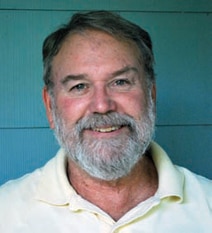
Something is missing from our cover story.
A recent study commissioned by the Christopher and Dana Reeve Foundation found that long-established estimates of SCI incidence and paralysis were way off the mark. The study found that between 5 and 6 million people in the United States are paralyzed to some extent. About 1,275,000 have spinal cord injuries, a huge change from the accepted figure of 250,000. But one finding stood out even more: the prevalence of SCI among Native Americans.
While Native Americans make up about .08 percent of the U.S. population, 7.3 percent of SCIs are sustained by Native Americans — nine times as many as would be expected. Understanding why is the subject of another study, but there is reason to believe that health services available to this group, especially those who live in isolated rural areas, are insufficient.
The Navajo Nation reservation, located in northern Arizona, southern Utah and western New Mexico, is the largest Native American land mass in the United States — 26,000 square miles — the size of West Virginia.
About 180,000 tribal members live there, many in remote areas. The Navajo Nation has its own health department, which conducted a needs survey with support from the Reeve Foundation about two years ago. “The top issue,” according to Ursula Knoki-Wilson, president of Navajoland Nurses, “is the need to have homes modified for wheelchair access.”
To appreciate that need, consider that in 1997, 56 percent of the Navajo people lived below the poverty level. The 1990 Census found that 51 percent lacked complete plumbing, and 48 percent did not have complete kitchen facilities. Current unemployment is very high, and even though the land is rich in natural resources, businesses are reluctant to relocate to the reservation because of lack of infrastructure. Of the 6,148 miles of roads, 77 percent are now dirt or gravel.
Imagine you use a wheelchair and live there. “The wheelchairs we’re issued don’t last long,” says Knoki-Wilson. “They don’t stand up to the rough terrain. And there’s no ready access to wheelchair repairs.”
Also, finding trained attendants to help with everyday living is difficult. “In winter, many wheelchair users must relocate. They are forced to go live with relatives, friends, in nursing homes, or wherever they can.”
What happens when medical care is needed, such as wound, urological or respiratory care?
Salaried community health representatives from the Navajo Division of Health are a vital link between people who need medical care and doctors or nurses, but public health nurses do not make home visits. In a sparsely developed region, it is necessary to travel to the nearest clinic. Consider that specialized medical care is difficult to find in any rural area. Now factor in the unusually high number of Native Americans with SCI, the remotely scattered population, unemployment, unpaved roads, lack of electricity, water and telecommunication services, and a shortage of trained personal attendants.
Now you know what’s missing.
Support New MobilityWait! Before you wander off to other parts of the internet, please consider supporting New Mobility. For more than three decades, New Mobility has published groundbreaking content for active wheelchair users. We share practical advice from wheelchair users across the country, review life-changing technology and demand equity in healthcare, travel and all facets of life. But none of this is cheap, easy or profitable. Your support helps us give wheelchair users the resources to build a fulfilling life. |


Recent Comments
Bill on LapStacker Relaunches Wheelchair Carrying System
Phillip Gossett on Functional Fitness: How To Make Your Transfers Easier
Kevin Hoy on TiLite Releases Its First Carbon Fiber Wheelchair